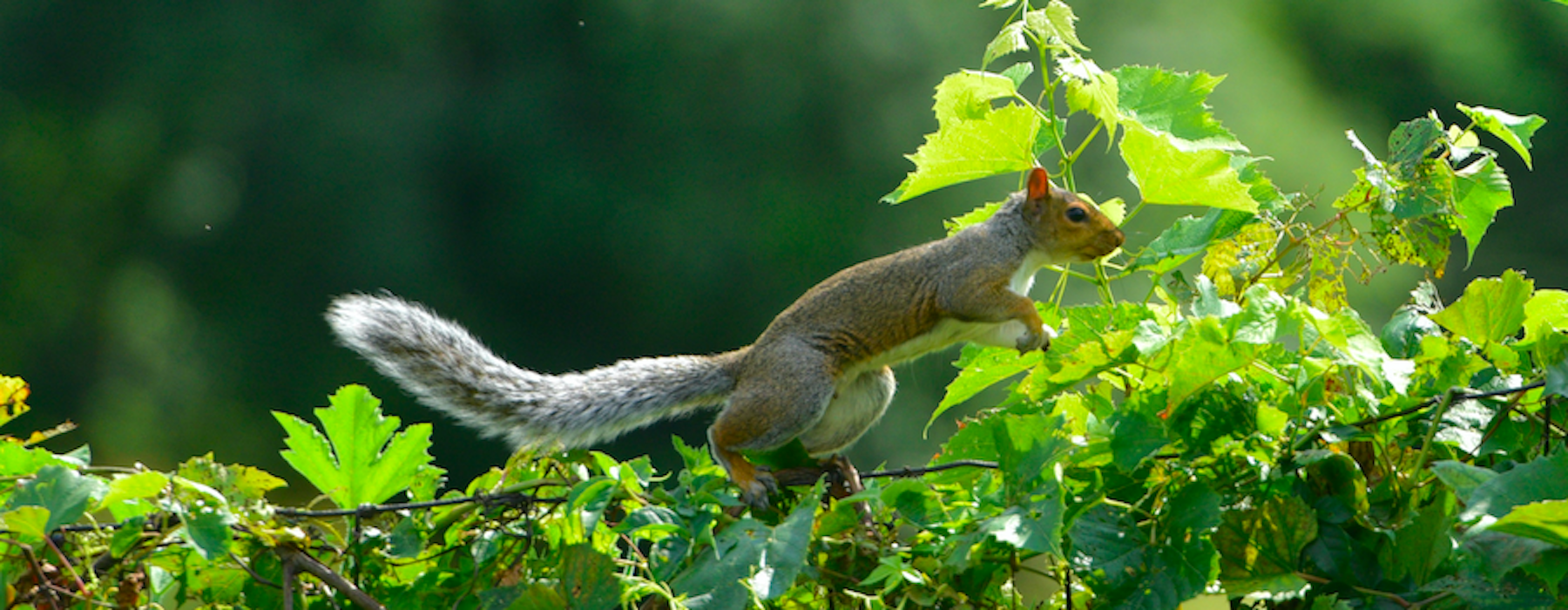Taxonomy
Order Rodentia
Family Sciuridae
Basic Description
- The Eastern gray squirrel is a medium sized tree squirrel with a long bushy tail, and small but prominent untufted ears. The top of the squirrel is covered with dark to pale grey fur, and may have cinnamon tones. The underside is lighter in coloration and tails are white to pale grey. The species does not exhibit differences in size or color between sexes.
- Length: 380-525mm (150-250mm tail)
- Mass: 338-750g
Habitat
Mature hardwood forest with a high proportion of mast producing trees such as oak, beech, or hickory. Squirrels prefer habitat with sufficient canopy cover to provide consistent above ground travel to avoid predators.
Vermont Range
Gray squirrels are found throughout the state, but the best habitat and highest population densities are found in the oak-rich hardwood forests of the Champlain Valley, Connecticut River Valley and southern Vermont.
Diet
- Type: Omnivore
- Nuts such as acorns, beechnuts, and hickory nuts are a large part of grey squirrels’ diets, but they will eat other items such as fruits, buds, flowers, roots, mushrooms, insects, and small bird eggs when mast is unavailable in the spring and summer.
Reproduction
Breeding occurs in two periods each year, January and June. After a gestation period of 40-45 days, a litter of 2-4 young are born. Young are weaned between 8-10 weeks old and will remain with their mother until the second litter is born, or sometimes through the winter for litters born in the summer. Life expectancy is 1-2 years.
Conservation Status
- State Rank: S5 (Secure)
- Global Rank: G5 (Secure)
- IUCN Red List: Least Concern
More Information
Distribution Map
Banner Image: Photo 154480964, (c) Craig Newman, some rights reserved (CC BY-NC) / Cropped from original







